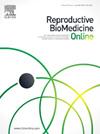ADENOMYOSIS AND INFERTILITY: ARE WE READY FOR PERSONALIZED TREATMENT?
IF 3.7
2区 医学
Q1 OBSTETRICS & GYNECOLOGY
引用次数: 0
Abstract
Introduction
Adenomyosis, i.e., the presence of endometrial tissue within the uterine muscle, is increasingly recognized in its association with infertility. Due to refinements in non-invasive diagnostic techniques, adenomyosis is being diagnosed in a significant proportion of women, with an increase particularly significant in those of reproductive age. Clinical manifestations of this condition range from dysmenorrhea to abnormal uterine bleeding, with implications for fertility that have garnered attention in recent years. Diagnostic advancements, new available therapeutic options, growing body of literature on the topic, and the importance of individualized patient management in improving reproductive outcomes, especially in assisted reproductive technologies (ART), all underscore the potential for personalized treatment strategies in infertile patients. The increasing prevalence of adenomyosis in women seeking fertility treatments necessitates a closer examination of its role in infertility, emphasizing the need for tailored approaches.
Impact on Fertility
The relationship between adenomyosis and infertility is complex. The exact etiology remains unclear, with factors such as hormonal influences and chronic inflammation suggested as responsible for the causal relationship. The inflammatory environment created by adenomyosis may disrupt normal implantation and embryo development, contributing to infertility. Studies indicate that women with adenomyosis have a lower probability of natural conception and poorer outcomes in ART. Recent meta-analyses report significantly lower clinical pregnancy rates, and higher miscarriage rates, at ART for infertile patients with adenomyosis compared to patients without adenomyosis.
Personalized Treatment Approaches
Given the heterogeneity of adenomyosis presentations and their varied impact on fertility, personalized treatment strategies are warranted. Current management options range from medical therapies, to surgical interventions, to ART in infertile patients. Hormonal treatments, including combined oral contraceptives and oral or locally-released progestins, aim to reduce symptoms and may improve endometrial receptivity. However, their efficacy in enhancing fertility remains debated. For women with severe symptoms or those failing medical management, surgical excision of adenomyotic tissue may be considered. This approach has shown promise in improving pregnancy rates, particularly in those with localized adenomyosis and adenomyomas. In cases of infertility, ART may be the best option in most cases. Personalized protocols that consider adenomyosis severity and associated factors can optimize outcomes. A recent study reports that infertile patients with asymptomatic endometriosis do not perform worse at ART compared to patients without the condition, contrary to what is reported for the general population with adenomyosis. Imaging studies report that the prognosis at ART is more severe when more ultrasound-diagnosed features are present. A combination of this two evidences may be used in the various clinical scenarios, where more aggressive ART protocols, or the use of GnRH analogs treatment before ART or before embryo transfer, may be used in more advanced cases of adenomyosis, i.e., in symptomatic patients, or in patients with several ultrasound features present.
Conclusion
Adenomyosis poses significant challenges for women facing infertility, necessitating a shift towards tailored treatment approaches. By integrating advanced diagnostic techniques, thorough clinical evaluation, and individualized management strategies, healthcare providers can improve outcomes for women with adenomyosis. As our understanding of the condition evolves, so too must our strategies for addressing its impact on fertility.
求助全文
约1分钟内获得全文
求助全文
来源期刊

Reproductive biomedicine online
医学-妇产科学
CiteScore
7.20
自引率
7.50%
发文量
391
审稿时长
50 days
期刊介绍:
Reproductive BioMedicine Online covers the formation, growth and differentiation of the human embryo. It is intended to bring to public attention new research on biological and clinical research on human reproduction and the human embryo including relevant studies on animals. It is published by a group of scientists and clinicians working in these fields of study. Its audience comprises researchers, clinicians, practitioners, academics and patients.
Context:
The period of human embryonic growth covered is between the formation of the primordial germ cells in the fetus until mid-pregnancy. High quality research on lower animals is included if it helps to clarify the human situation. Studies progressing to birth and later are published if they have a direct bearing on events in the earlier stages of pregnancy.
 求助内容:
求助内容: 应助结果提醒方式:
应助结果提醒方式:


